Peas are a delightful addition to any garden, offering a sweet reward for the gardener’s efforts.
As a long-time gardening enthusiast, I’ve always enjoyed the simplicity and joy of growing peas. They’re not only easy to grow but also bring a sense of nostalgia, reminding me of shelling peas with family during spring and summer evenings.
In this article, we’ll explore the benefits of growing peas, delve into some of my favorite varieties, and provide essential care tips to help you cultivate a successful pea crop in your garden.
Benefits of Growing Peas
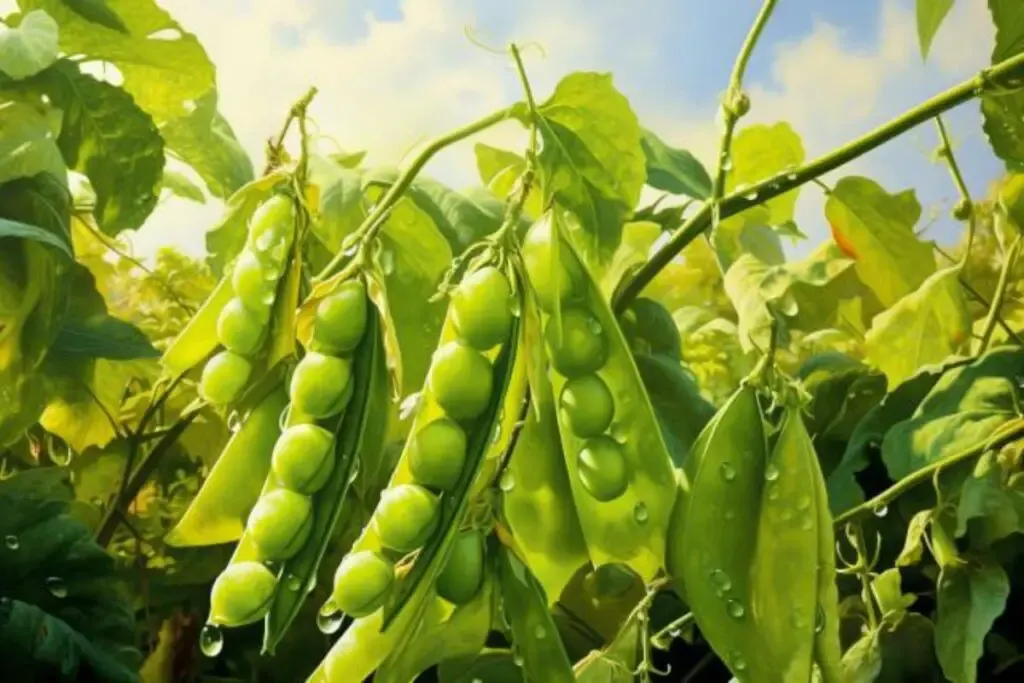
1. Nutritional Value
Peas are a great source of vitamins A, C, K, and several B vitamins. They’re also rich in fiber and protein, making them a healthy addition to any meal.
Growing your own peas ensures that you get the most nutrients, as fresh peas contain more vitamins than store-bought, canned, or frozen ones.
2. Nitrogen Fixing
Peas have the unique ability to fix nitrogen in the soil. This means they take nitrogen from the air and convert it into a form that plants can use.
Growing peas can improve the soil quality in your garden, making them beneficial for whatever you plant in the same space in the future.
3. Easy to Grow
Peas are one of the easiest vegetables to grow, making them perfect for beginners or those with less time for gardening.
They require minimal maintenance and are generally hardy, resisting most pests and diseases.
My Favorite Pea Varieties
When it comes to selecting pea varieties, there are so many wonderful options to choose from.
Here are three varieties that I particularly enjoy growing:
1. Sugar Snap Peas
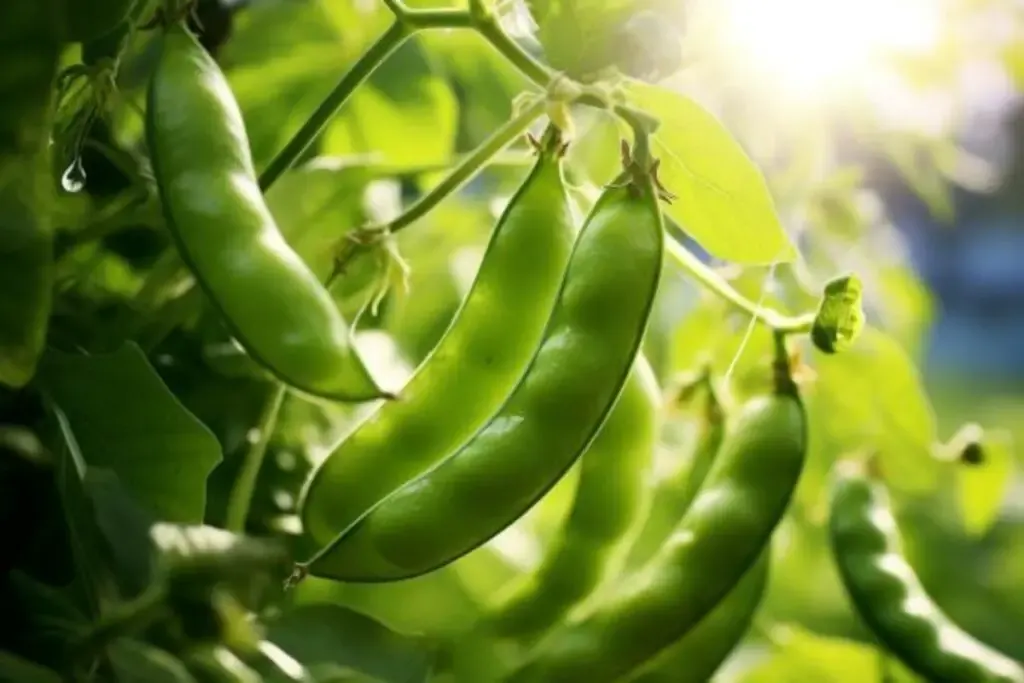
These are a favorite in my garden due to their sweet flavor and crisp texture. You can eat the whole pod, making them perfect for snacking right off the vine.
Sugar snap peas are also very productive and easy to grow, ideal for novice gardeners.
2. Snow Peas
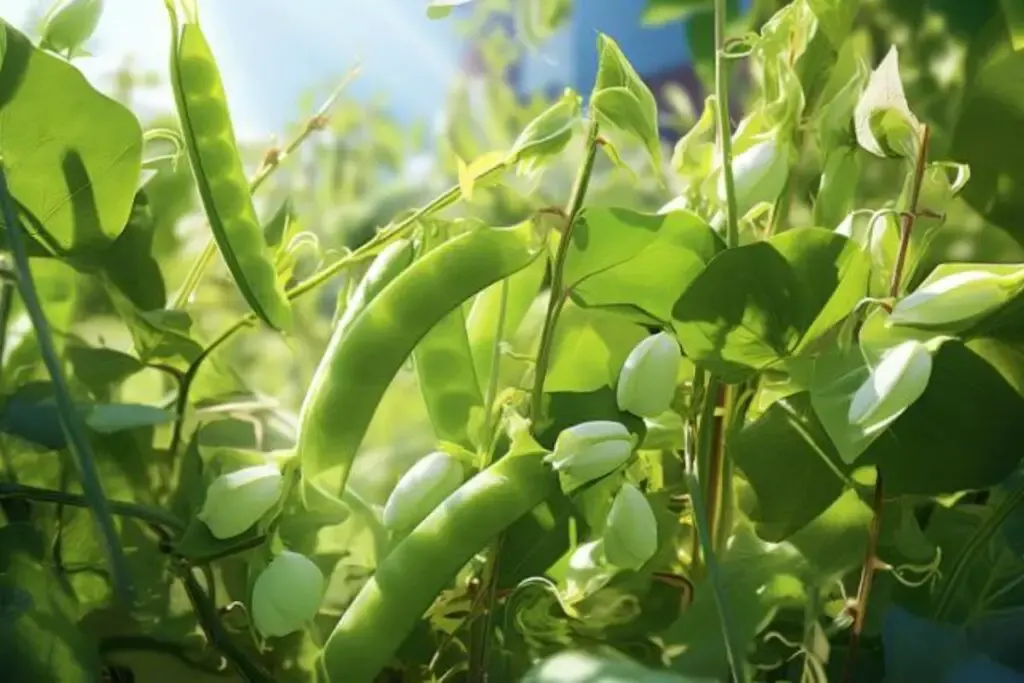
Known for their thin, edible pods, snow peas are a staple in Asian cuisine. They are harvested while the peas inside are still small, giving them a delicate and slightly sweet flavor.
They’re fantastic in stir-fries or eaten raw in salads.
3. Garden Peas (Also known as English peas)
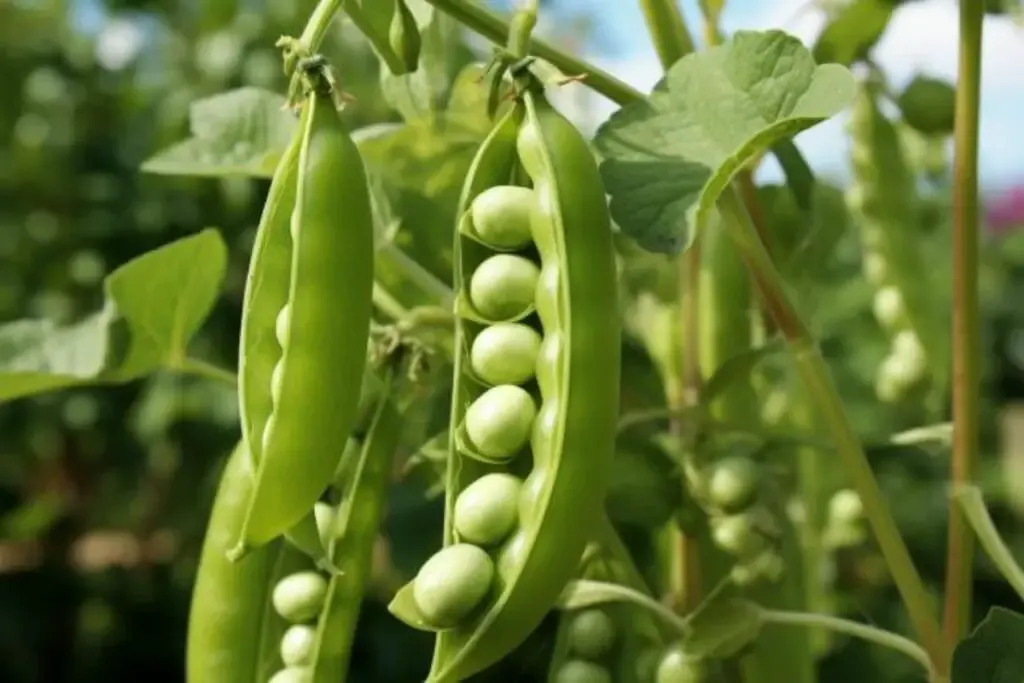
These are your classic shelling peas. The peas are harvested when they are fully mature, and the pods are not edible.
Garden peas are wonderfully sweet and are the variety I remember shelling with my grandparents. They do require a bit more work than snap or snow peas, but the taste is well worth it.
Pea Care
Pea plants are rewarding to grow, as they don’t demand much but offer so much in return. By understanding their basic needs and providing the right care, you can enjoy a bountiful harvest of sweet, crisp peas.
Let’s break down the essential aspects of pea care, including planting, light requirements, soil preferences, water needs, temperature and humidity conditions, and fertilizer usage.
Planting
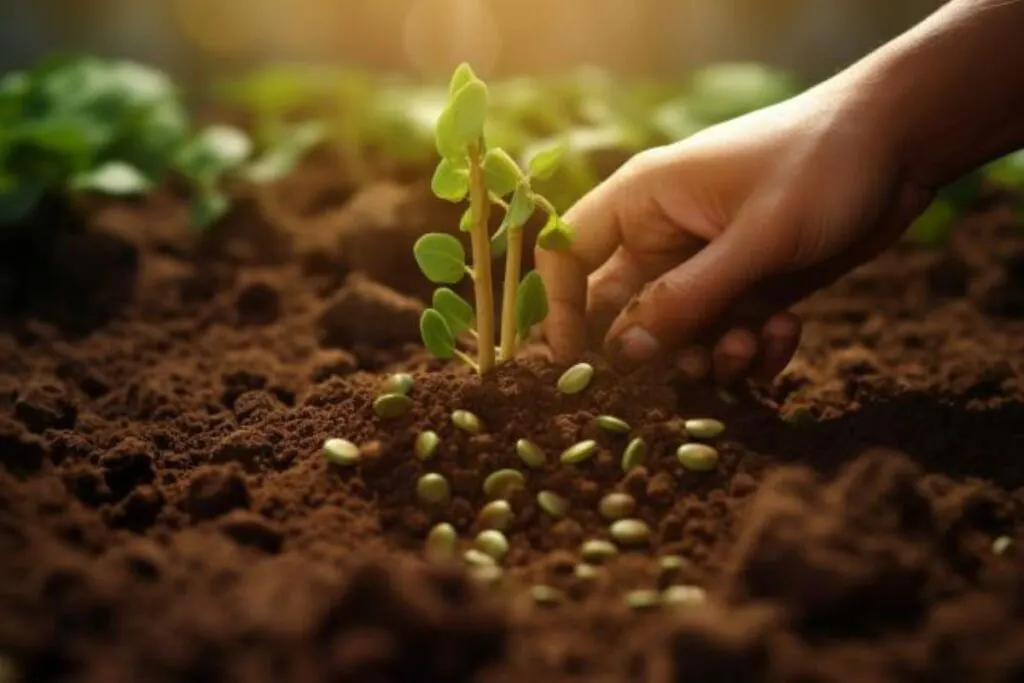
Peas should be planted early in the spring as soon as the soil can be worked. They prefer cool weather and can even tolerate a light frost.
Plant the seeds about 1 inch deep and 2 inches apart in rows. Peas will benefit from a trellis or support to climb, especially the taller varieties.
If you’re short on space, consider bush varieties that require less support.
Light
Peas thrive in full sunlight, requiring at least 6 hours of direct sunlight per day. More sunlight results in healthier plants and a higher yield.
If you’re growing peas in a cooler climate, maximizing sunlight exposure is particularly important to keep the plants warm.
Soil
Peas are not too picky about soil as long as it is well-draining. They prefer a soil pH between 6.0 and 7.5.
Before planting, I like to work in some compost or aged manure to add nutrients and improve the soil structure. Peas do well in soil that retains moisture but is not waterlogged.
Water
While peas do need consistent moisture to thrive, they are susceptible to root rot if overwatered. Water the plants regularly to keep the soil moist, especially during dry spells.
Once the plants start flowering and producing pods, it’s crucial to keep up with watering for proper pod development.
Temperature and Humidity
Peas are a cool-season crop and grow best at temperatures between 55°F and 70°F. They can tolerate light frosts and actually prefer cooler weather.
High humidity can lead to fungal diseases, so it’s important to ensure good air circulation around the plants.
Fertilizer
Since peas are nitrogen-fixing plants, they don’t require much, if any, additional nitrogen in the form of fertilizer.
However, a light application of a balanced, all-purpose fertilizer at planting can help give them a good start, especially if your soil is lacking in nutrients.
Avoid over-fertilizing, as this can lead to lush foliage at the expense of pod production.
Harvesting Peas
Harvesting peas at the right time is key to enjoying their best flavor. For snap and snow peas, harvest when the pods are plump but before the peas inside fully mature.
For garden peas, wait until the pods are round and the peas inside feel firm. Harvesting regularly encourages the plants to produce more pods.
Use two hands when picking peas to avoid damaging the plant – one hand to hold the vine and the other to pull the pea pod.
Pruning
Pruning is not typically necessary for pea plants. However, if you notice any yellowing or dead leaves, it’s a good idea to remove them to prevent any potential disease spread.
Also, if your pea plants are becoming too dense, you can thin them out a bit to improve air circulation.
Propagating
Peas are most commonly propagated from seeds and are rarely propagated vegetatively.
The best way to propagate peas is to save some of the seeds from your current crop and plant them the following year. Just be sure to choose healthy, mature peas for seed saving.
How to Grow Peas From Seed
Growing peas from seed is straightforward and rewarding. Plant the seeds directly in the garden as soon as the soil can be worked in the spring.
Sow the seeds about 1 inch deep and 2 inches apart. Peas don’t transplant well, so it’s not recommended to start them indoors.
They prefer cool weather, so there’s no need to wait for the soil to warm up like you would with summer vegetables.
Growing in Pots
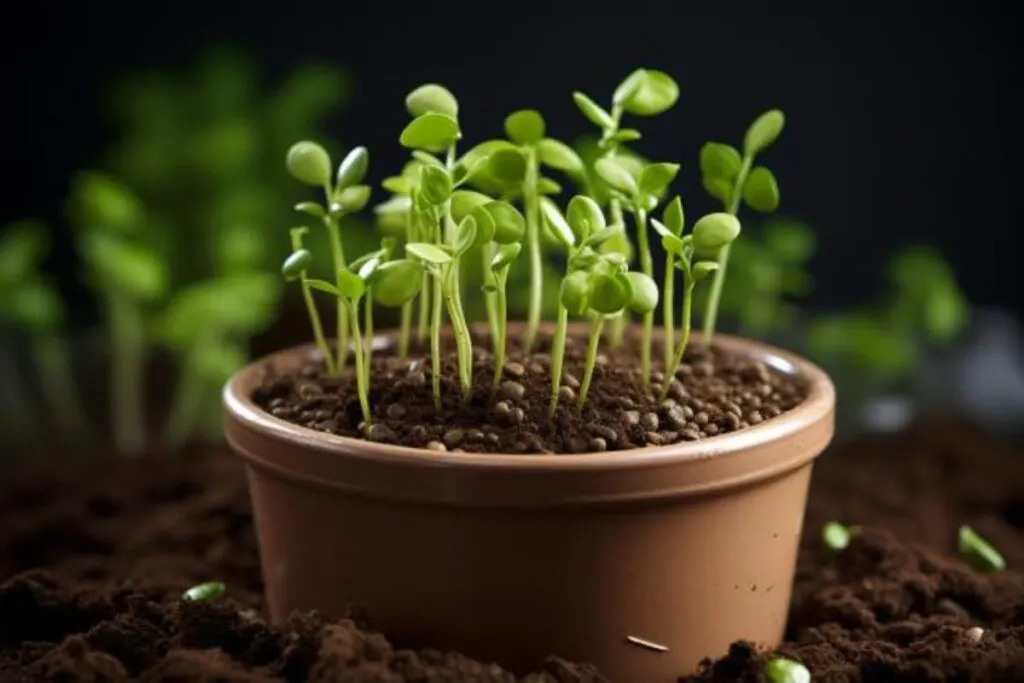
Peas can also be successfully grown in pots or containers. Choose a container that’s at least 10-12 inches deep and has good drainage.
Bush varieties are best suited for container growing. Ensure that the container gets plenty of sunlight and keep the soil moist.
You may need to provide some support for the plants as they grow, even for bush varieties.
Overwintering
Peas are typically not overwintered, as they are an annual crop. However, in milder climates, you can plant a late crop in the fall for an early spring harvest.
In colder regions, it’s best to wait and plant a new crop in early spring. If you do have a mild winter, mulching heavily can protect the roots and potentially allow for an early spring crop.
Transplanting
Transplanting peas is generally not recommended because they have delicate root systems that don’t tolerate disturbance well.
It’s best to sow pea seeds directly in the garden where they will grow to maturity. If you do need to start seeds indoors due to a short growing season, use peat pots that can be planted directly into the garden to minimize root disturbance.
Common Pests & Diseases
Peas can be susceptible to a few pests and diseases. Common pests include aphids and pea weevils. Aphids can be managed by spraying with water or using insecticidal soap.
Pea weevils require removing and destroying affected plants. As for diseases, watch out for powdery mildew and root rot. Good air circulation and proper watering practices can help prevent these issues.
Growing peas is a journey filled with little joys, from planting the seeds to watching the vines climb and, of course, the sweet reward of fresh peas straight from the pod.
Whether you’re a seasoned gardener or just starting, peas are a delightful addition to any garden. They remind us of the simple pleasures of gardening – the magic of watching something grow from a tiny seed into a plant laden with pods.
Embrace this experience, and let the humble pea be a part of your gardening adventure!

